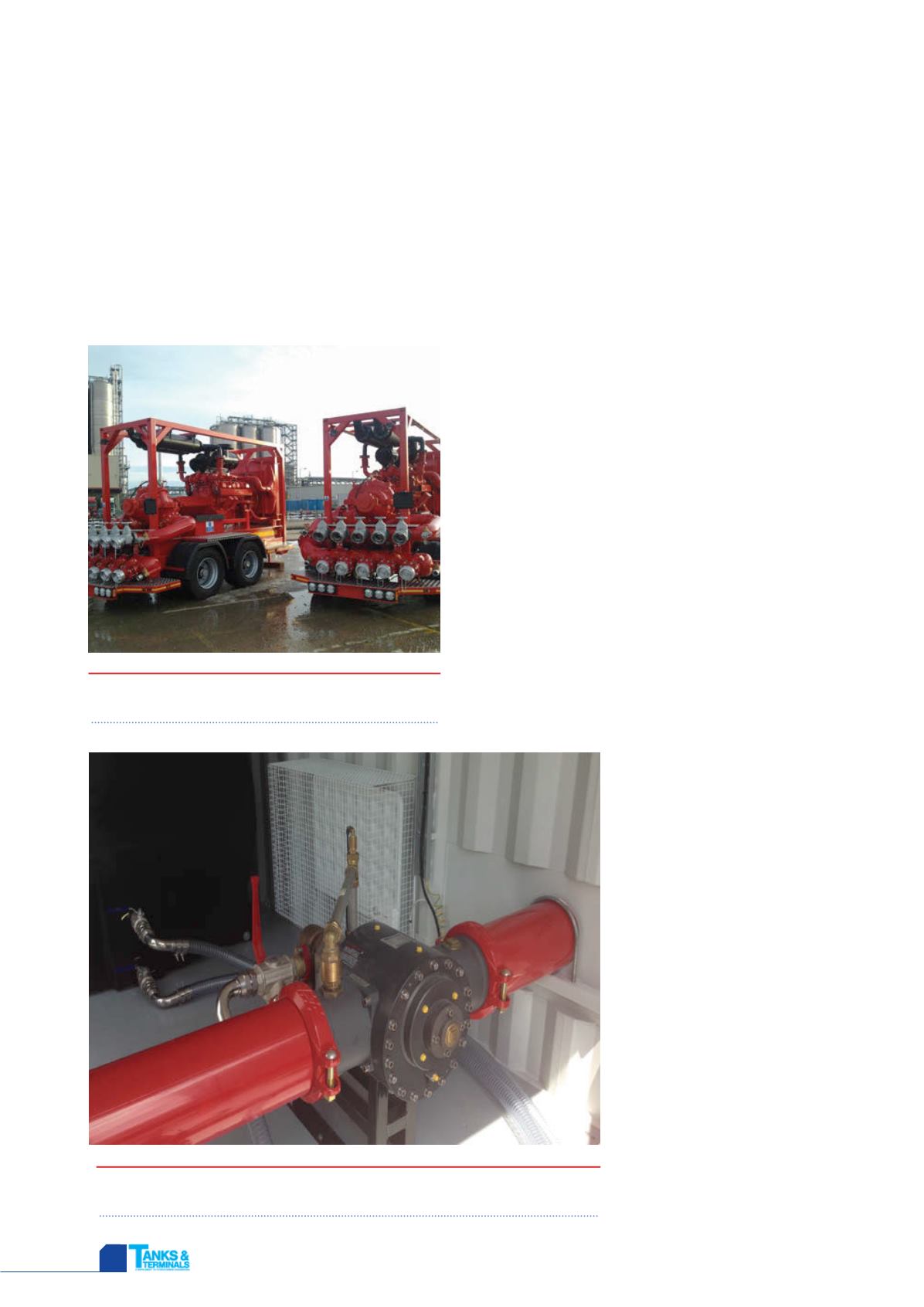
HYDROCARBON
ENGINEERING
38
particular interest in ensuring compliance with preplans that
identify multi tank/bund scenarios and associated equipment,
manpower and the resources necessary to help mitigate the
incident so far as reasonably practicable. With local authority
fire cover under constant review against a background of cost
cutting, it must be acknowledged that resources will be more
likely to come from industry itself.
Key headings for consideration are:
n
Manpower.
n
Equipment and resources: including monitors; other fire
fighting equipment; fire pumps; water supplies; foam.
n
Fire water run off.
n
External impact.
Important elements: equipment
resources and manpower
It’s a manpower thing
Availability of manpower will be the key element in the mix
for deciding whether or not to go for a combined fixed and
mobile solution or just fixed protection. Some sites,
particularly storage sites as opposed to processing facilities,
run with limited personnel and that may be tied up in other
equally important operational functions during an incident. In
order to ensure resilience in the case of outside assistance
coming in, familiarity with procedures and kit is essential:
n
Know the location of the facility they may be called to.
n
Know emergency access points.
n
Know who to report to.
n
Be aware of facility specific hazards.
n
Be aware of facility equipment and how to use it.
n
Have approved documentation/passes to enable access
through police cordon.
n
Undertake periodic topography and local training
exercises.
Equipment and resources
Decisions here will be reflected by your risk assessments but
can be divided into a number of specific areas:
n
For large inventory flammable liquid storage there is no
substitute for a correctly designed fixed or mobile
approach.
n
This in turn depends on water supplies. The UK’s existing
fuel storage tank sites are often lacking in this
department. Buncefield has rewritten the rule book in
many ways. Water tanks and diesel pumps typically
designed to National Fire Protection Agency (NFPA) 20
are key to success. Secondary alternatives include
seawater where appropriate, lagoon, river, pond or
reservoir. It is sometimes
possible due to geography to
use a gravity fed supply.
However, access to secondary
water supplies presents logistical
challenges such as distance,
height of lift, amount of hose
available, vital crossings to be
negotiated (such as railways and
motorways).
n
High volume mobile fire
pumps are still a rare
commodity in the UK. The
new dimension pumps in use
by the county fire and rescue
services are primarily
designed for flood relief duty
or relay pumping, not the
required high pressure/high
volume. A 15 000 l/min
trailer pump reduces the
need for many appliances
and can be strategically
located and relocated.
Maintaining it during long
periods of operation could
be handled by a pre
arrangement with a specialist
contractor, not forgetting
refuelling.
Figure 2.
Dual firemiks foam proportioners in steel container. Various
valve and tank options to suit the application.
Figure 1.
High volume/high pressure mobile
pumps give water supply flexibility.


